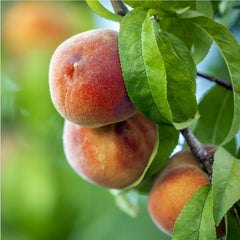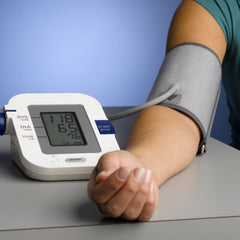People Who Frequently Eat These 4 Types of Foods Face a Significantly Higher Risk of Diabetes
Table of Contents:
Among the many factors that contribute to elevated blood glucose levels, diet plays a pivotal role. Poor eating habits are a major cause of diabetes, making it no exaggeration to say that “diabetes is often caused by what we eat.”
In particular, there are four types of foods that, when consumed excessively, can bring you one step closer to developing diabetes. Individuals with a family history of diabetes or those in the "prediabetic" stage should be especially cautious.
These high-risk foods typically share the following characteristics: high in trans fats, sugar, and salt, or are heavily processed red meats.

High-Sugar Foods: +15% Increased Diabetes Risk
In 2024, researchers at McMaster University in Canada analyzed dietary data from over 120,000 people across 20 countries, including 42,000 individuals from China. The results showed:
- Compared to low-glycemic-index diets, high-glycemic-index diets were associated with a 15% increased risk of diabetes.
- Individuals with the highest glycemic load had a 21% greater risk of diabetes compared to those with the lowest glycemic load.
To put it simply, the glycemic index reflects how quickly a food raises blood sugar, while glycemic load reflects how much it raises blood sugar overall.
Among high-sugar foods, sugar-sweetened beverages have repeatedly been identified as especially harmful. One study found that increased sugar intake was linked to elevated risk for 45 diseases. Specifically, consuming just 250 ml more of sugary drinks per day was associated with a 27% higher risk of type 2 diabetes.
Recommendations:
Limit Added Sugar Intake
- Reduce added sugar intake to below 25 grams per day (about 6 teaspoons). This includes common forms like white sugar, brown sugar, rock sugar, syrups, and honey.
- Limit sugar-sweetened beverage consumption to no more than 355 ml per week.
Improve Carbohydrate Quality in Staple Foods
- Minimize consumption of refined carbs such as white rice, white flour, overly soft porridge, and instant grain powders.
- Whole grains and legumes should make up at least one-third of your staple foods—ideally over half. Options include multigrain rice, whole wheat buns, corn tortillas, rye noodles, yam, taro, and oats.
Eat Fruit Wisely
- Choose fruits with a low glycemic index and lower calorie content, such as grapefruit, oranges, guava, apples, pears, plums, and cherries. Limit daily fruit intake to 200 grams.
- Avoid fruit juices, canned fruit, and high-calorie fruits like durian and avocado.
High-Salt Diet: +28% Increased Diabetes Risk
A study published in the *Mayo Clinic Proceedings* examined salt intake among over 400,000 adults registered with the UK Biobank, with an average follow-up of 11.8 years.
The findings revealed:
Compared to individuals who "never" or "rarely" added salt to their meals, those who did so "occasionally," "usually," or "always" had an 11%, 18%, and 28% increased risk, respectively, of developing type 2 diabetes.
Recommendations:
Use a Salt-Restricting Spoon
Adults should limit daily salt intake to no more than 5 grams. A standard salt-restricting spoon holds 2 grams—so no more than 2.5 spoons per day, spread across all meals.
Enhance Flavor with Other Seasonings
Use herbs and umami-rich ingredients like green onions, garlic, ginger, mushrooms, pepper, star anise, chili, or lemon juice to boost flavor without increasing sodium.
Watch Out for Hidden Salt
Many processed foods and condiments—such as rice sauces, fermented bean curd, soy sauce, chicken bouillon, MSG, biscuits, chips, preserved plums, instant noodles, and even bread—can be high in sodium.
Trans Fats: +39% Increased Diabetes Risk
Trans fats are a major health hazard. They are linked to more than 500,000 cardiovascular deaths annually and are known to clog arteries and increase inflammation, heightening the risk for diabetes and coronary heart disease.
A 14-year prospective study found that for every 2% increase in energy intake from trans fats, the relative risk of type 2 diabetes rose by 39%.
Inflammation and obesity triggered by trans fats may serve as intermediate steps in the development of diabetes.
Recommendations:
Read Ingredient Labels Carefully
Watch for terms like “vegetable shortening,” “non-dairy creamer,” or “margarine,” which may contain trans fats. Choose products labeled “0 grams trans fat.”
Avoid High-Heat Cooking
- Trans fats often result from improper cooking methods. Repeated heating or excessively high temperatures when using vegetable oils can generate trans fats.
- Opt for healthier cooking methods such as steaming, boiling, stewing, or stir-frying. Minimize consumption of fried foods.
Processed Red Meat: +46% Increased Diabetes Risk
A study by the Harvard T.H. Chan School of Public Health involving over 210,000 participants revealed:
- Individuals who consumed the most red meat had a 62% higher risk of developing type 2 diabetes compared to those who ate the least.
- Consuming an additional 100 grams of processed red meat per day increased the risk of diabetes by 46%.
The study reinforced current dietary guidelines that recommend limiting red meat to reduce the risk of diabetes.
Recommendations:
Limit Red Meat Intake
- Red meat is a good source of iron, which helps prevent anemia. However, most people already consume more than necessary.
- Adults should aim for 300–500 grams of red meat per week, or roughly 40–75 grams per day.
- Limit consumption to no more than 3 times a week, with portions under 75 grams, focusing on lean cuts.
Increase Plant-Based Protein
Replacing red meat with nuts and legumes can reduce type 2 diabetes risk by 30%, while substituting with dairy products can reduce the risk by 22%.
FAQs about Diabetes
Are Groundnuts Good for Diabetes?
Yes, groundnuts (peanuts) can be a beneficial addition to a diabetes-friendly diet. They have a low glycemic index (GI) of just 14 and a glycemic load (GL) of 1, making them one of the lowest GI foods. This means they cause only a minimal rise in blood sugar levels. In addition to their low GI, groundnuts are also rich in nutrients, including healthy fats, protein, and fiber, which can help with blood sugar management.
Are Pistachios Good for A Diabetic?
Yes, pistachios are good for people with diabetes. They are rich in dietary fiber and unsaturated fatty acids, which help regulate blood glucose and support heart health. Several randomized controlled trials have shown that eating pistachios can improve fasting blood glucose levels and enhance insulin sensitivity, making them a healthy snack choice for diabetic individuals.
Are Potatoes Healthy for Diabetics?
Potatoes are rich in vitamins, minerals, and fiber, making them a nutritious option that can be included in a healthy diet for people with diabetes. However, portion control and preparation methods are key—choosing boiled or baked potatoes over fried ones and pairing them with high-fiber foods can help manage blood sugar levels effectively.
Can A Diabetic Consume Honey?
Yes, a diabetic can consume honey in moderation. Although honey is a natural sweetener and contains beneficial antioxidants, it still raises blood sugar levels and should be treated like any other sugar. Therefore, diabetics should only eat small amounts and monitor their blood glucose closely, preferably under the guidance of a healthcare professional.
Can A Diabetic Eat Banana?
Yes, a diabetic can eat bananas in moderation. Bananas contain natural sugars and dietary fiber, which can help regulate blood sugar levels when eaten as part of a balanced diet.





